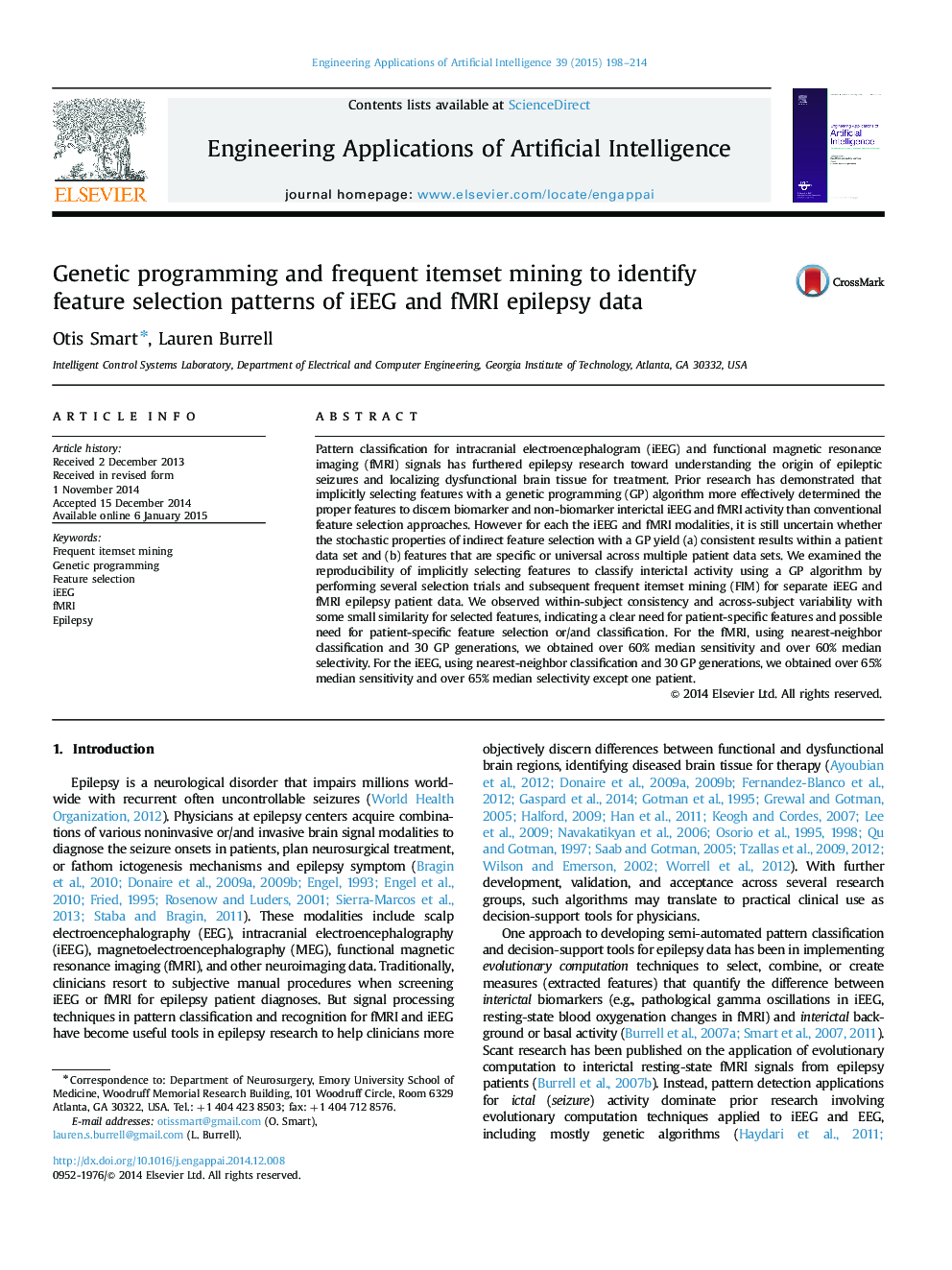| کد مقاله | کد نشریه | سال انتشار | مقاله انگلیسی | نسخه تمام متن |
|---|---|---|---|---|
| 380417 | 1437440 | 2015 | 17 صفحه PDF | دانلود رایگان |

• We used FIM to compute confidence intervals for GP-based feature selection.
• We found intra-subject consistency and inter-subject variability in feature subsets.
• We achieved over 60% median sensitivity and selectivity for both modalities.
Pattern classification for intracranial electroencephalogram (iEEG) and functional magnetic resonance imaging (fMRI) signals has furthered epilepsy research toward understanding the origin of epileptic seizures and localizing dysfunctional brain tissue for treatment. Prior research has demonstrated that implicitly selecting features with a genetic programming (GP) algorithm more effectively determined the proper features to discern biomarker and non-biomarker interictal iEEG and fMRI activity than conventional feature selection approaches. However for each the iEEG and fMRI modalities, it is still uncertain whether the stochastic properties of indirect feature selection with a GP yield (a) consistent results within a patient data set and (b) features that are specific or universal across multiple patient data sets. We examined the reproducibility of implicitly selecting features to classify interictal activity using a GP algorithm by performing several selection trials and subsequent frequent itemset mining (FIM) for separate iEEG and fMRI epilepsy patient data. We observed within-subject consistency and across-subject variability with some small similarity for selected features, indicating a clear need for patient-specific features and possible need for patient-specific feature selection or/and classification. For the fMRI, using nearest-neighbor classification and 30 GP generations, we obtained over 60% median sensitivity and over 60% median selectivity. For the iEEG, using nearest-neighbor classification and 30 GP generations, we obtained over 65% median sensitivity and over 65% median selectivity except one patient.
Journal: Engineering Applications of Artificial Intelligence - Volume 39, March 2015, Pages 198–214